How-to Article ...by Rudy Hilado

Different ways of achieving a water tight radio box without the use of tape-down lids...

If you're like me, you like boats that are easy to setup, maintain, and run. One aspect of model boats that has always bothered me is using tape to seal up a radio box. While tape often works well to waterproof a radio box, it can be troublesome to use since it requires special tape and it can be difficult to get a perfect watertight seal due to the seams created when you overlap the tape at the corners. Also, if you ever need to get inside the radio box, you have to rip the tape off and then apply new tape--it's a one shot deal.
I've search for some time trying to find a good alternative to using taped radio boxes. Here are a couple of examples that have proven to work very well.
I
like to build my boats so the radio box can be easily lifted out of the boat as
needed without using any 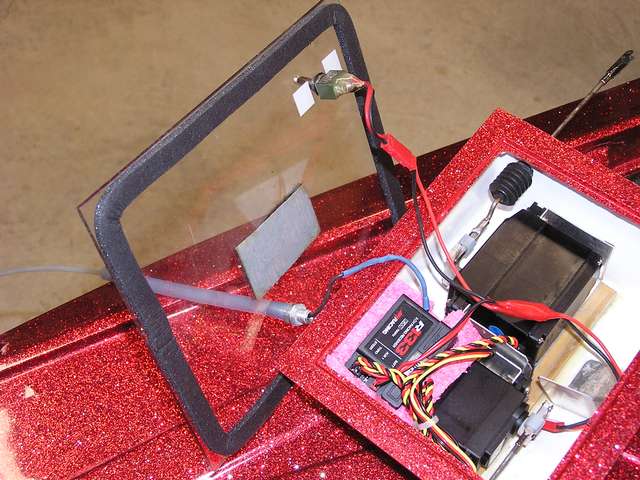 screws
or bolts. My radio boxes are held in place by braces then secured by rubber
bands over the box. This example is a simple modification to traditional taped
radio boxes which makes use of the securing rubber bands. Instead of taping the
small Lexan lid to the radio box, I cut a new lid that was much larger and
matched the outer diameter of the radio box. I then applied a strip of Frost
King rubber foam weatherseal to the edge of the lid. So when the box is secured
in the boat, the rubber bands press down on the lid and create a completely
watertight seal. I have tested this radio box in the bath tub and on the pond,
and so far it has stayed completely dry.
screws
or bolts. My radio boxes are held in place by braces then secured by rubber
bands over the box. This example is a simple modification to traditional taped
radio boxes which makes use of the securing rubber bands. Instead of taping the
small Lexan lid to the radio box, I cut a new lid that was much larger and
matched the outer diameter of the radio box. I then applied a strip of Frost
King rubber foam weatherseal to the edge of the lid. So when the box is secured
in the boat, the rubber bands press down on the lid and create a completely
watertight seal. I have tested this radio box in the bath tub and on the pond,
and so far it has stayed completely dry.
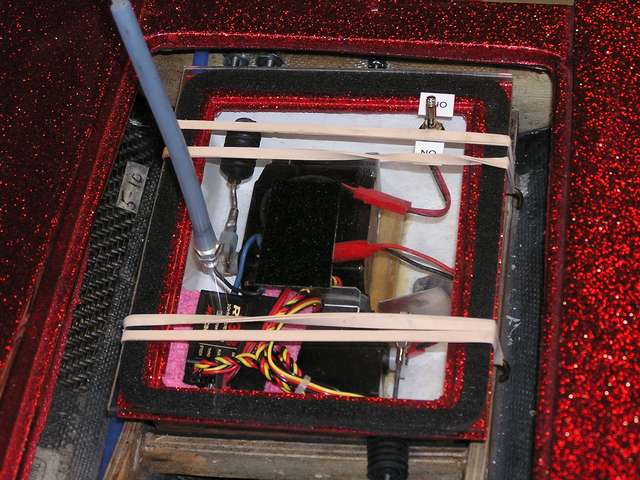
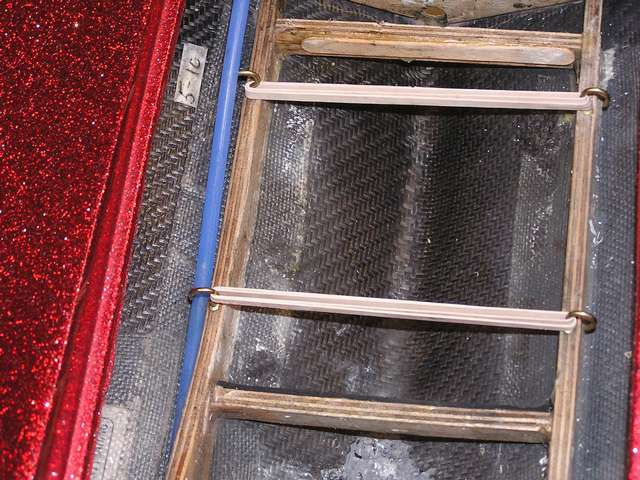
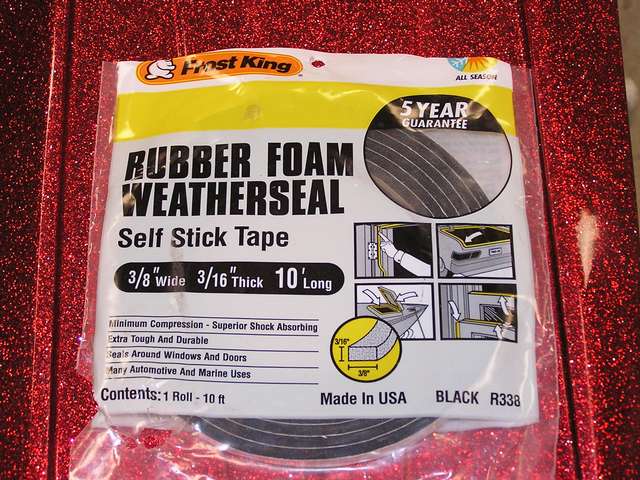
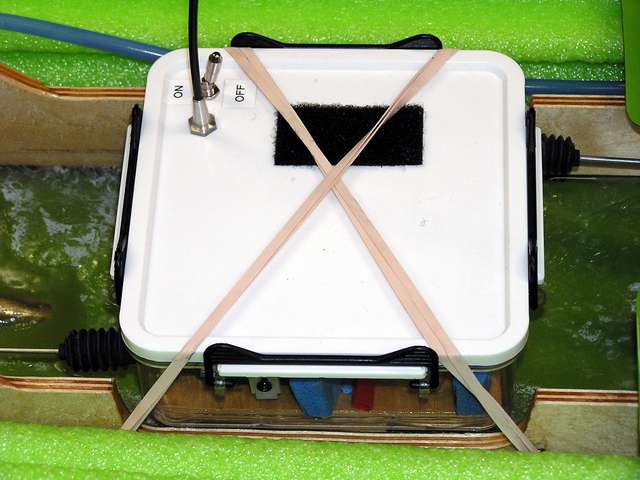 This other example of a tapeless radio box is
a result of my quest to find a less expensive alternative to fiberglass radio
boxes. This sandwich storage box is made by ClickClack
and sells for $4. The lid on the hard plastic box has a
This other example of a tapeless radio box is
a result of my quest to find a less expensive alternative to fiberglass radio
boxes. This sandwich storage box is made by ClickClack
and sells for $4. The lid on the hard plastic box has a 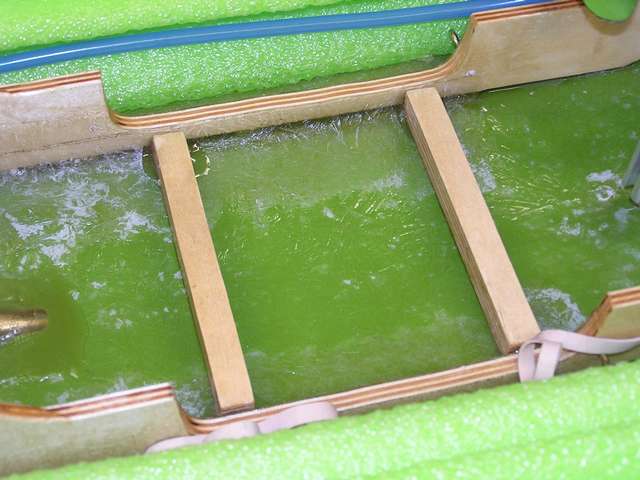 silicone strip all around it and it is
secured to the box by four latches. The latches hold the lid on the box very
firmly and create a completely airtight seal. To support the servos inside the
radio box and prevent any extra holes, I put a 1/4" piece of wood in the bottom.
I coated the wood with a thin coat of epoxy and glued it to the bottom of the
box.
silicone strip all around it and it is
secured to the box by four latches. The latches hold the lid on the box very
firmly and create a completely airtight seal. To support the servos inside the
radio box and prevent any extra holes, I put a 1/4" piece of wood in the bottom.
I coated the wood with a thin coat of epoxy and glued it to the bottom of the
box.
The sandwich box is a little wider than 5 inches, the standard space between the engine rails, so I had to cut the rails down to make room for the box. The box is held in place by two cross beams between the engine rails, and matching blocks glued to the bottom of the box. When the radio box is placed in the boat and held down by the rubber bands, it is rock solid and it does not move. This radio box has also proven to be very durable and completely water tight.
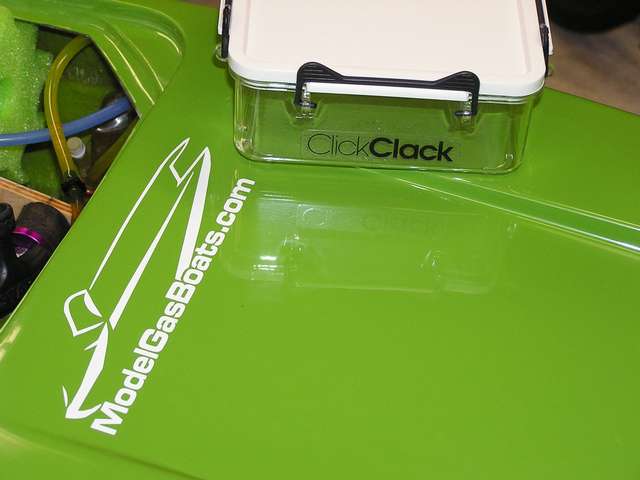
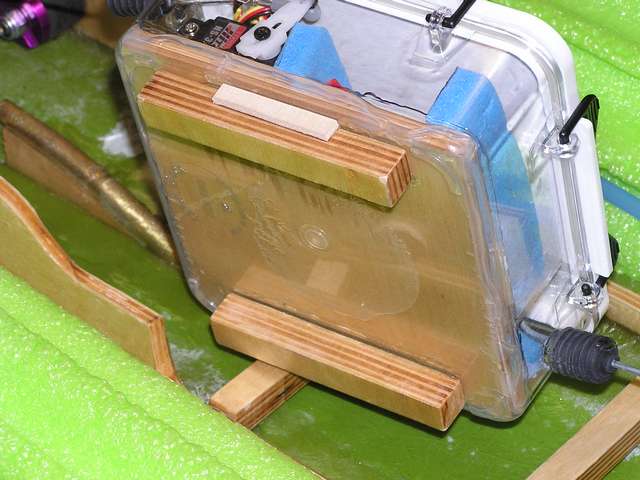
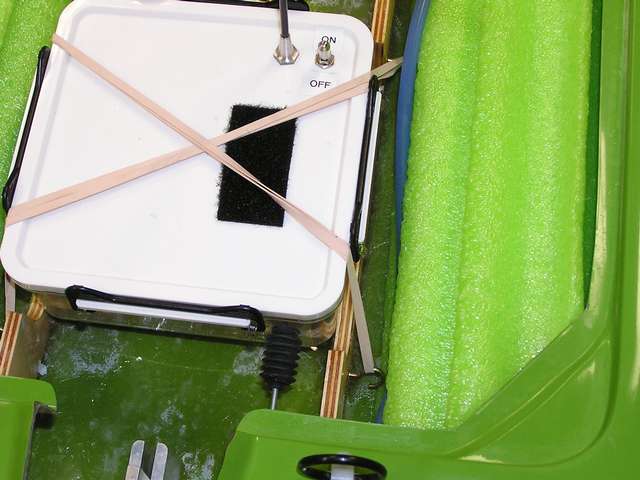
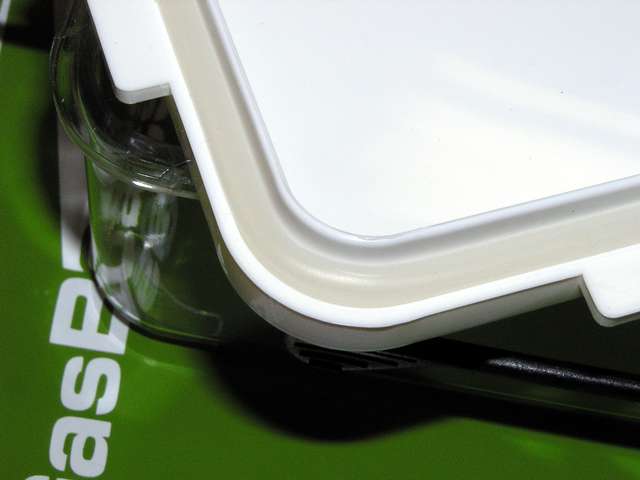
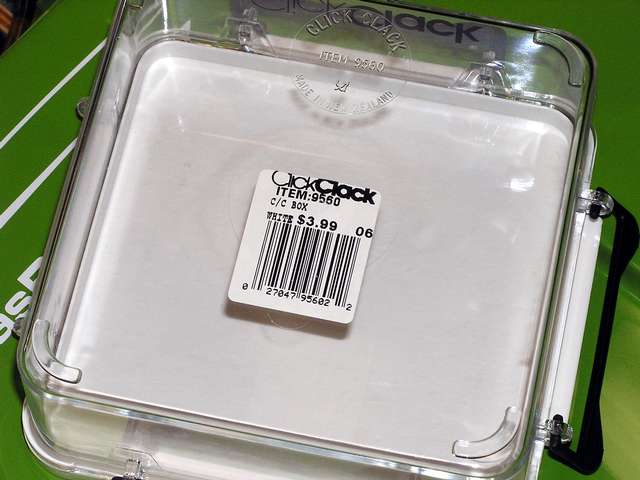
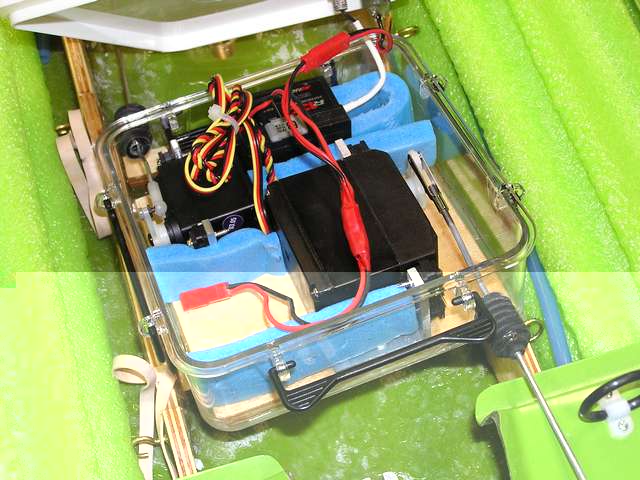
I'm sure there are many other implementations off tapeless radio boxes, and I encourage you to look for a solution that works for you. Together, we can all end the tyranny of the radio box tape!
Products:
- Frost King Rubber Form Weatherseal tape - $2 (Home Depot)
- ClickClack box - $4 (www.clickclack.com; found at local The Container Store)

